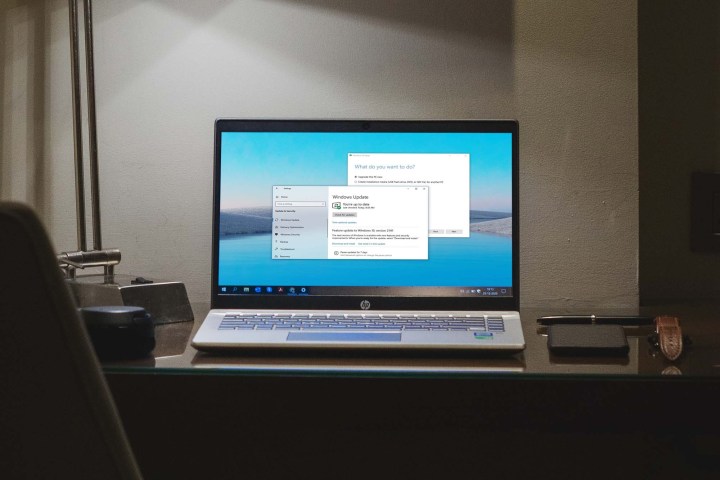Microsoft just made two big announcements related to Windows 10 and Windows 11. For those who aren’t ready for Windows 11, or can’t upgrade, the Windows 10 November 2021 Update is now rolling out. And for anyone who is eager to upgrade to Windows 11, the new operating system is now more broadly available for download on more eligible devices.
The Windows 10 November 2021 update isn’t as major as previously released featured updates. Microsoft has focused it on productivity, management, and security. Yet the update is still being released using the same measured approach in the past to ensure a smooth rollout. You won’t be missing much if you can’t download it as the new features are focused for IT administrators.
Examples of new features include WPA3 H2E standards support on Windows 10 for enhanced Wi-Fi security, Windows Hello for Business password-free deployment models, and GPU compute support in the Windows Subsystem for Linux (WSL).

You can check for the Windows 10 November 2021 Update on your PC by going to your Windows Update settings (Settings >Update & Security > Windows Update) and selecting Check for Updates. You can then select the Download and Install button and have Windows download the update, then restart your PC. It should not take longer than 5 minutes, depending on the speed and age of your PC or if you’re on a newer version of Windows 10.
With the launch of the November 2021 Update, Microsoft also made a big change to the release schedule of Windows 10. It now lines up with Windows 11 for annual feature update releases. This means only one big update a year, instead of the usual two. The next Windows 10 featured update will be coming in the second half of 2022.
John Cable, vice president of program management for Windows Servicing and Delivery at Microsoft, said Microsoft will continue to support at least one version of Windows 10 through October 14, 2025. Some Windows 11 features are also in Windows 10, including the new Microsoft Store experience, which began rolling out on November 10.
A Microsoft spokesperson also tells us that for those interested in experiencing x64 emulation, a PC running Windows 11 on ARM is required. Microsoft is still committed to supporting customers on Windows 10 on ARM through October 14, 2025.
As for Windows 11, Cable said that based on the positive rollout experience and user feedback,
Editors' Recommendations
- Windows 11 might nag you about AI requirements soon
- You’re going to hate the latest change to Windows 11
- Windows 11 tips and tricks: 8 hidden settings you need to try
- Windows 11 vs. Windows 10: finally time to upgrade?
- Beware! The latest Windows 11 update might crash your PC


